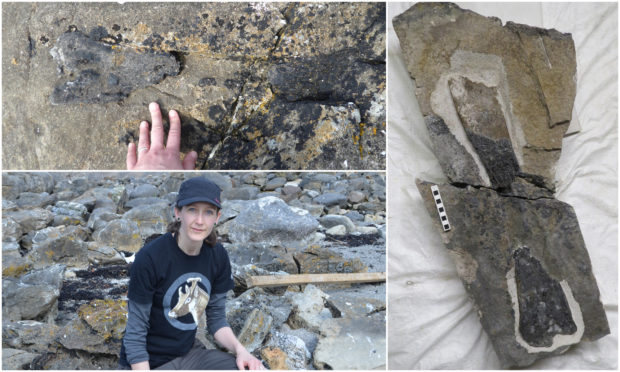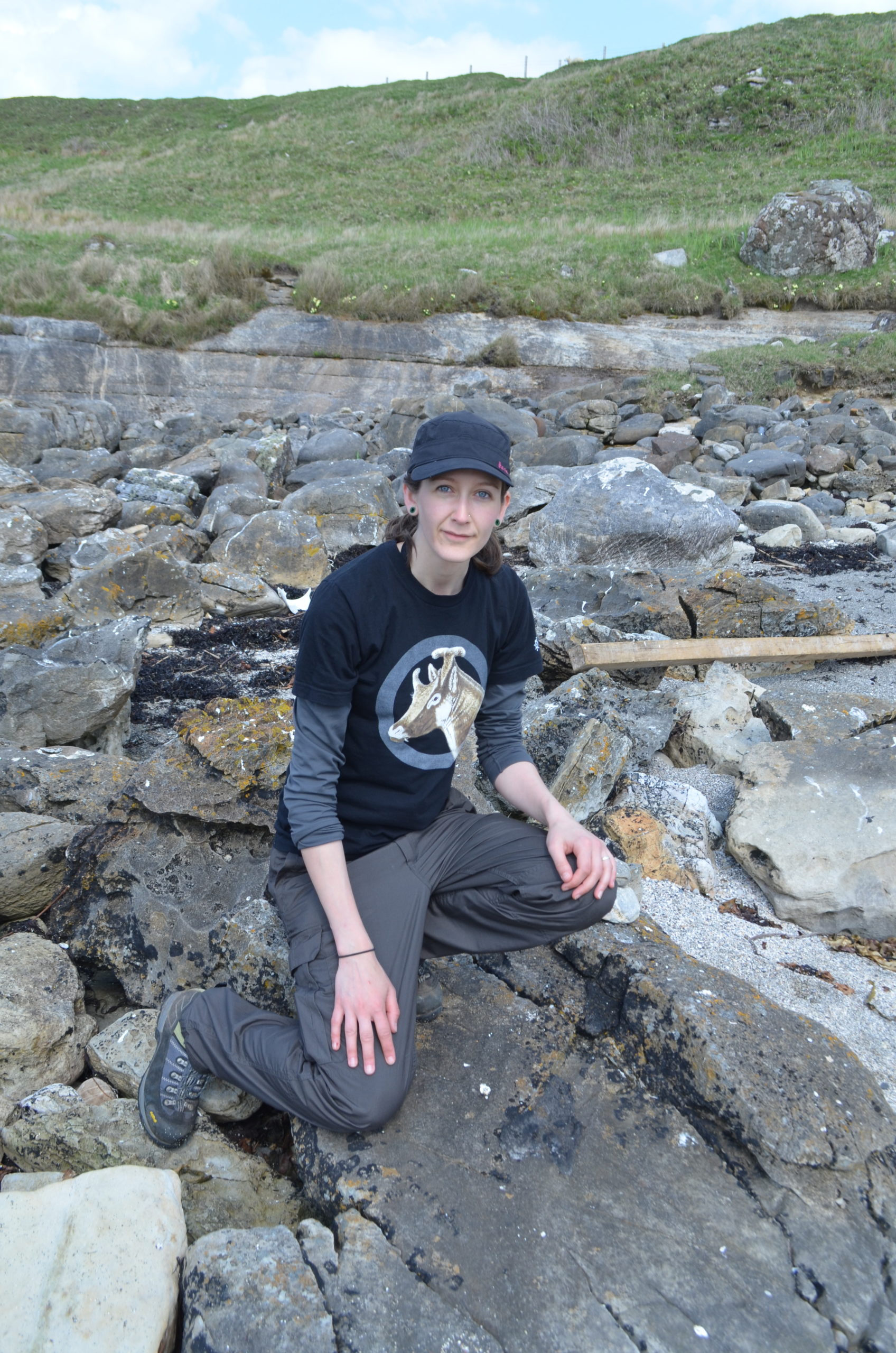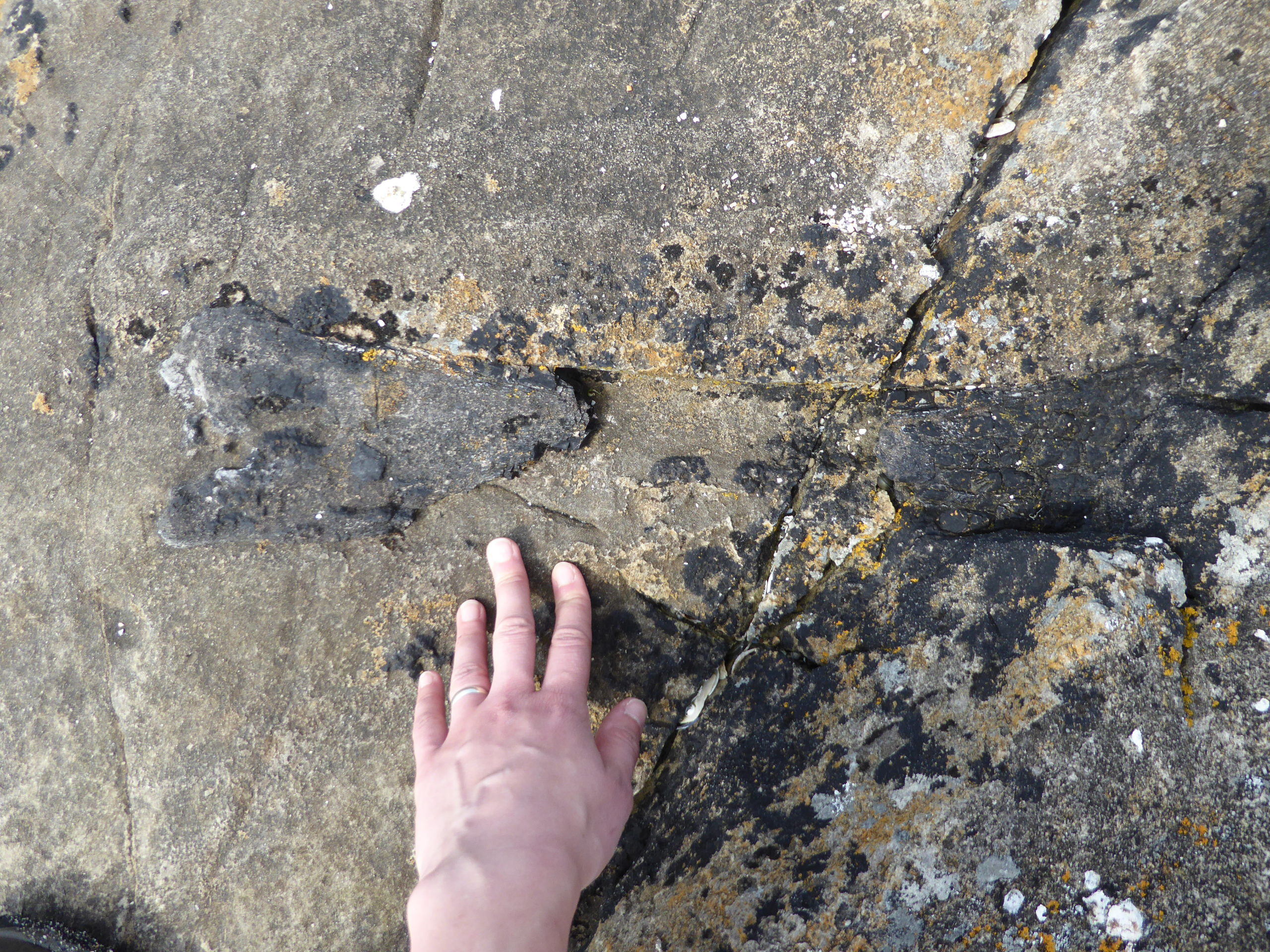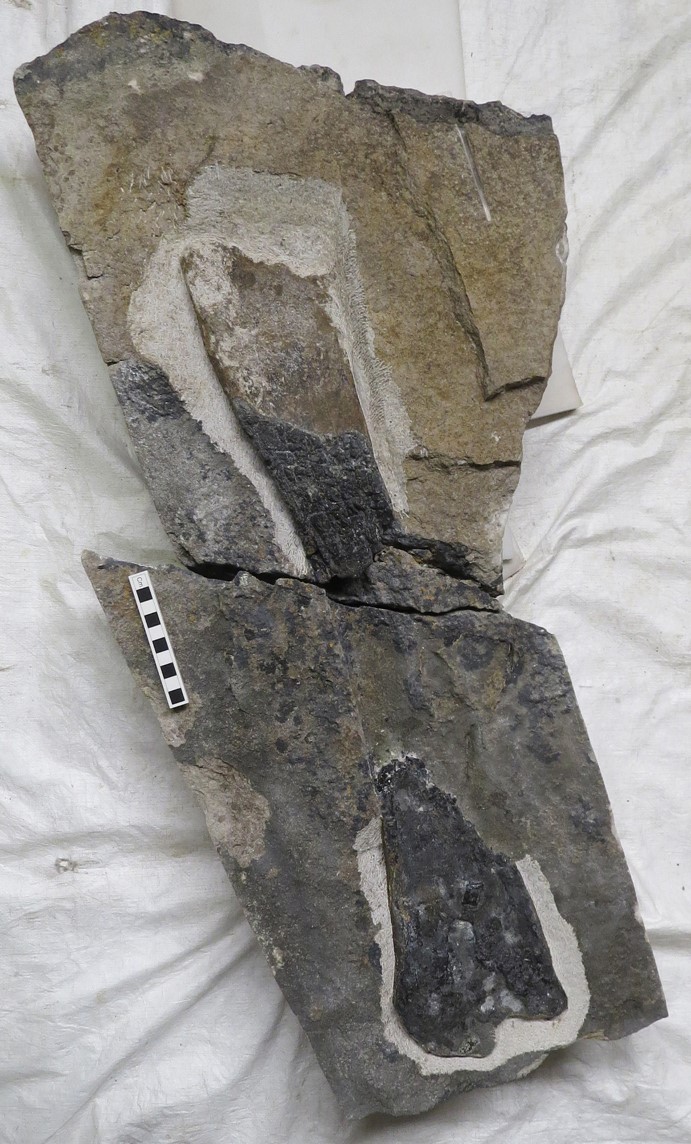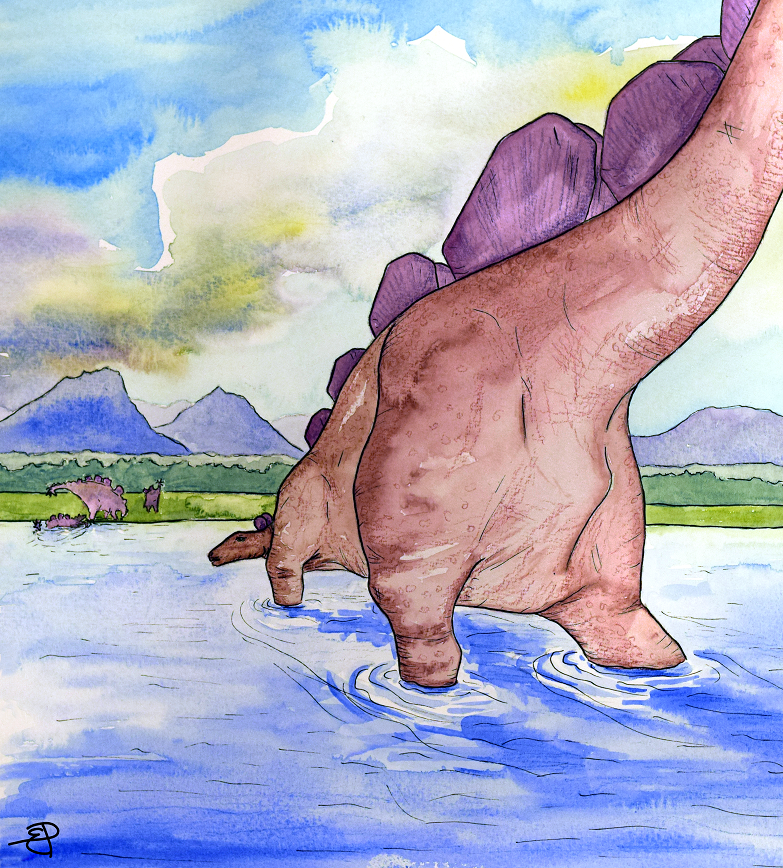New evidence has emerged indicating that dinosaurs prowled previously unknown areas of Scotland during the Jurassic age, after a researched stumbled upon a fossil while jogging along a beach.
The rare new find is the first of its kind to be uncovered on the Hebridean isle of Eigg, and anywhere outside of Skye.
It is believed to date back 166 million years.
Researchers believe the limb bone is thought to have belonged to a stegosaurian dinosaur, like the renowned Stegosaurus.
The fossil dates to the middle of the Jurassic age – the same age as fossils uncovered on Skye – and is the first dinosaur fossil to be found from the age on Eigg following finds of marine reptiles and fish documented by 19th-century geologist and writer Hugh Miller.
The bone was uncovered by Elsa Panciroli, a research affiliate at National Museums Scotland, during fieldwork funded by National Geographic Society with The Isle of Eigg Heritage Trust allowing permission for the project to be undertaken.
She said: “This is a hugely significant find. Globally, middle Jurassic fossils are rare and until now the only dinosaur fossils found in Scotland were on the Isle of Skye.
“This bone is 166 million years old and provides us with evidence that stegosaurs were living in Scotland at this time.”
The bone has measured in at about 1ft long and was discovered inside a boulder on the foreshore.
The constant action of waves has left the fossil badly damaged, but an expert team of palaeontologists were able to extract it from the rock for closer study.
Analysis of the bone, focusing on the shape and miscrostucture, has allowed experts to establish that it formed part of the hind limb of a stegosaur.
Ms Panciroli continued: “It was a bit of a serendipitous discovery.
“In 200 years of searching no-one has found a dinosaur before, so this is quite special.
“I was running along the shore on my way back to meet the rest of the team and I ran right over it. It wasn’t clear exactly what kind of animal it belonged to at the time, but there was no doubt it was a dinosaur bone.
“The middle Jurassic was a really interesting time for animals of all kinds. They were diversifying into lots of different groups and developing new ecologies – ways of life – to exploit their environment.
“Every fossil we find adds a significant new piece of information to our understanding of the time period and the course of evolution.”
The find has been documented as part of National Museums Scotland’s collection in Edinburgh, with a 3D model created by Matthew Humpage available to view and download for free online.
Dr Steve Brusatte of Edinburgh University, who is a co-author of the research paper, said: “Elsa’s discovery of this bone is really remarkable.
“Nobody, not even Hugh Miller himself, had found dinosaur bones on Eigg before.
“This fossil is additional evidence that plate-backed stegosaurs used to roam Scotland, which corroborates footprints from the Isle of Skye that we identified as being made by a stegosaur.”
